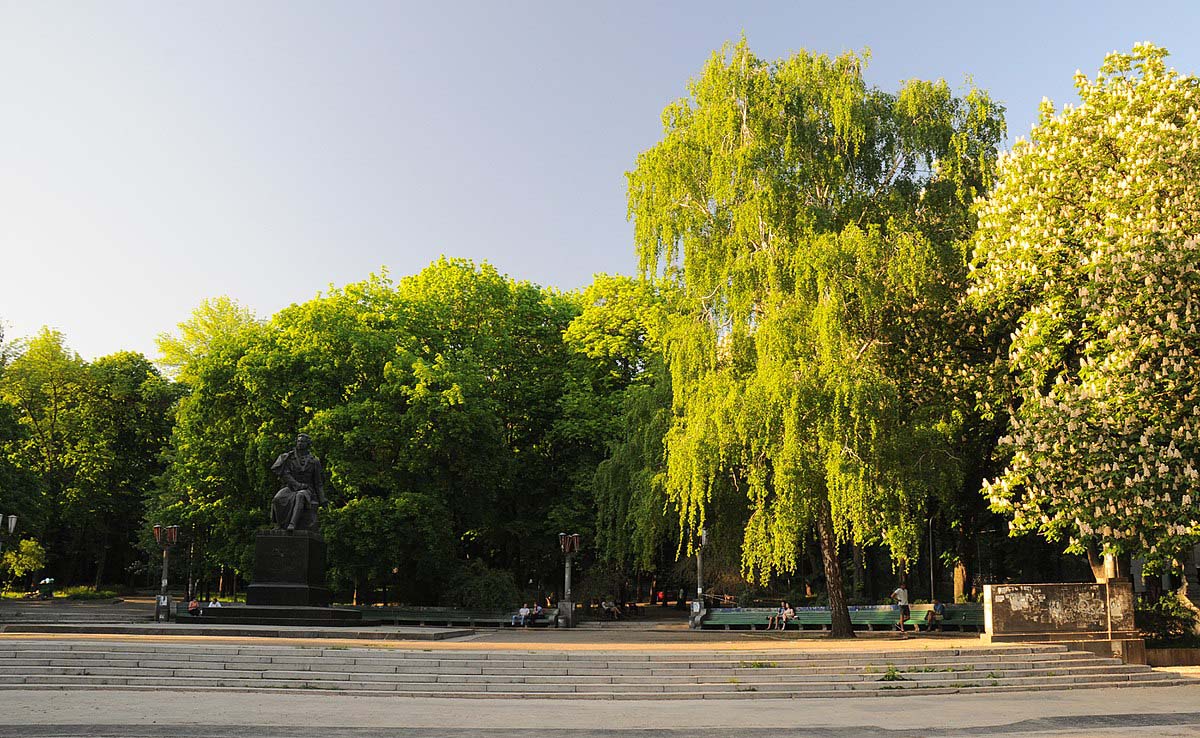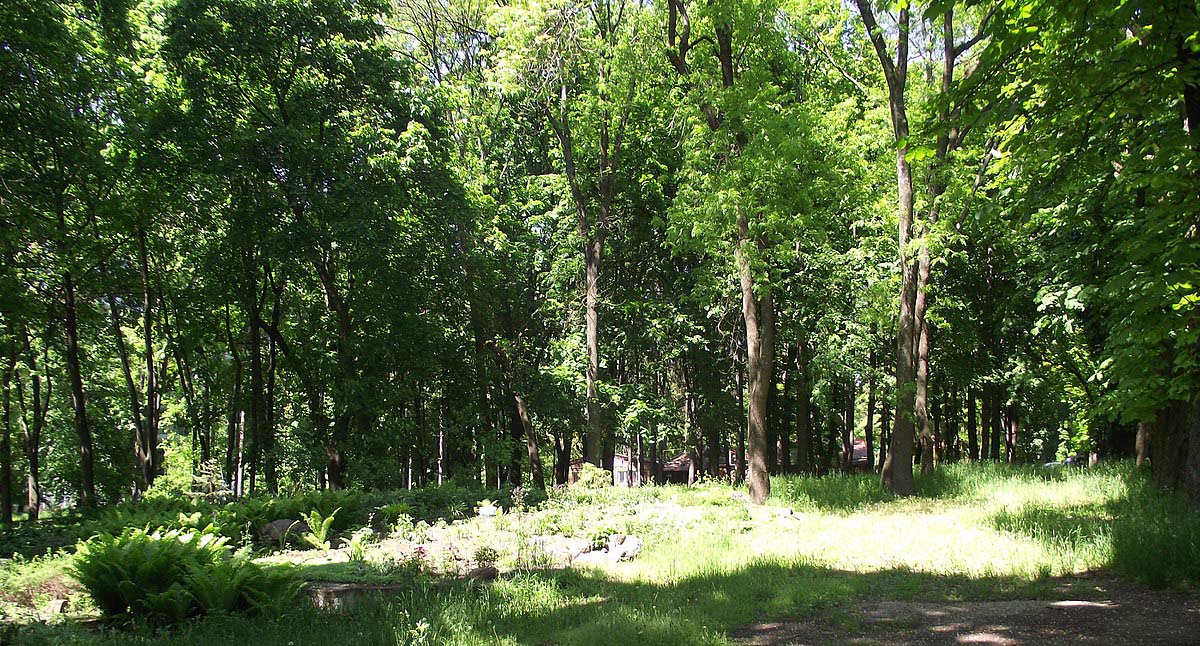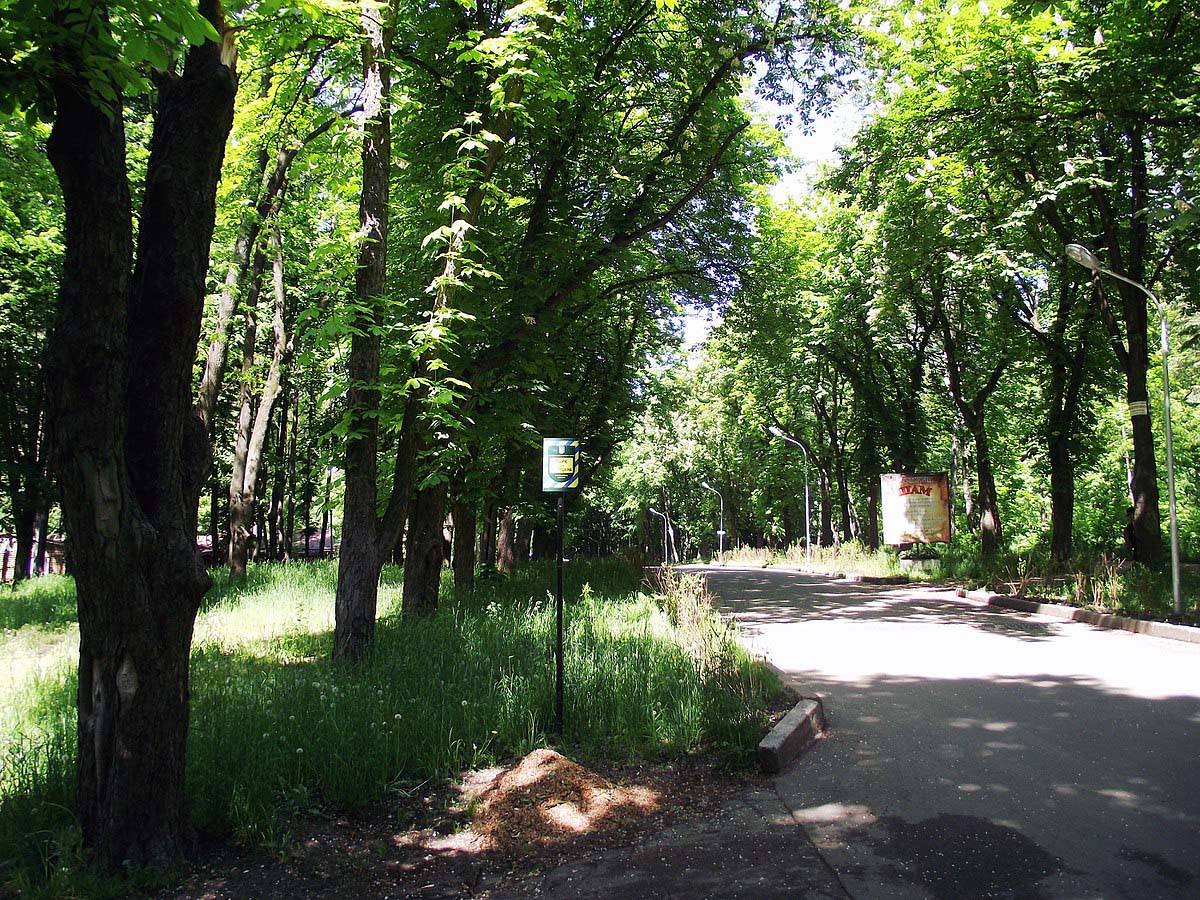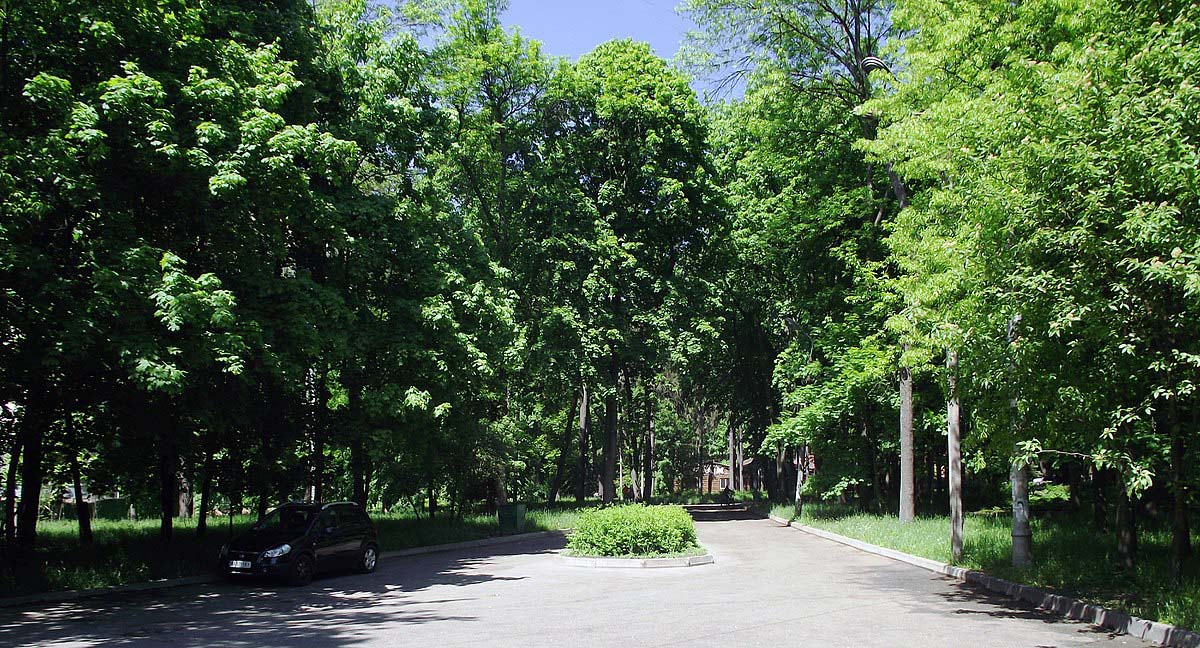The idea of creating a park arose in connection with the end of the lease period of the Kyiv Horticulture Society for the orchard, which was located on the Brest-Litovskoye Highway. The garden did not bring much income to the city, so in the fall of 1898, the head of the garden commission of the city duma, Romishovsky, proposed annexing this site to the city borders and establishing a country park for public use here. Soon the Duma decided to allocate 60 hectares of land for the development of the park. The following year, 1899, the 100th anniversary of the birth of A.S. Pushkin was celebrated, so it was decided to name the park Pushkinsky.
In 1900, soldiers of the 129th Bessarabian Regiment, whose summer camps were located nearby, as well as the city’s public, began work on creating a park. On an area of 2 hectares, a nursery for 100,000 seedlings was organized for future planting. The “highlight” of the park was that it was equipped for horseback riding and car rides. For this purpose, the project provided for two wide through alleys that connected modern Pobeda Avenue and Degtyarevskaya Street.
It was decided that the children would plant trees in the park. We prepared 2,000 holes and the same number of seedlings in advance – they were donated by well-known gardeners in the city, Christer and Wesser. On October 19, 1902, a celebration took place. Trams brought over 1,000 students from 53 city schools to the park, children were given brochures “The Tree and Its Life” and “Trees and Their Benefits,” and to the sounds of military bands, in the presence of the “city fathers,” the trees that gave rise to Pushkin were planted park. Mostly these were spruce, larches, as well as oaks and lindens. Unlike other city parks, the trees here were planted in separate biogroups, resulting in the formation of groves of different types of trees. In 1906-1907, about 31,000 seedlings were planted. In 1936, to organize a children’s sector, another 8 hectares of land were added to the park, on which about 2,000 trees, 13,000 shrubs were planted, and many lawns and flower beds were arranged.
At the end of the Great Patriotic War, an exhibition of captured German equipment was held in the park. It was solemnly opened on February 23, 1945 by Marshal of the Soviet Union G.K. Zhukov. The exhibition lasted until the mid-1960s, after which the captured equipment was sent for melting down. In the 1960s – 1970s, a green theater was opened in the park (not preserved, in its place – a restaurant), a cultural building of the Bolshevik plant, a dance floor (not preserved), a cafe, a concert and dance hall “Lira” (now – exhibition pavilion “Acco-International”), reading and chess and checkers pavilions (not preserved), attractions and slot machines (not preserved). During the 70s, on the territory of Pushkin Park, on weekends, there was an illegal market for records with musical recordings of foreign performers, which were brought from abroad.
On June 2, 1962, a monument to A. Pushkin was erected near the entrance to the park. The statue of the poet is 3.5 meters high, located on a pedestal made of black labradorite. The total height of the monument is 7.6 meters. The monument to Pushkin became the first Kyiv monument to sit. In 2007, the park was reconstructed – landscaping work was carried out, young trees were planted: red oak, chestnut, ash, rowan, conifers, flower beds and landscape compositions were arranged. The external lighting system was also reconstructed, paths were paved and benches were installed.
Now there are about 60 species and forms of trees and shrubs in the park. The predominant tree species are smooth elm, Norway maple, silver maple, horse chestnut, Scots pine, green ash, and the predominant species of shrubs are common lilac, spirea (meadowsweet), and mock orange. There are also many fruit trees in the park: apricot, cherry plum, cherry, pear, apple tree.




